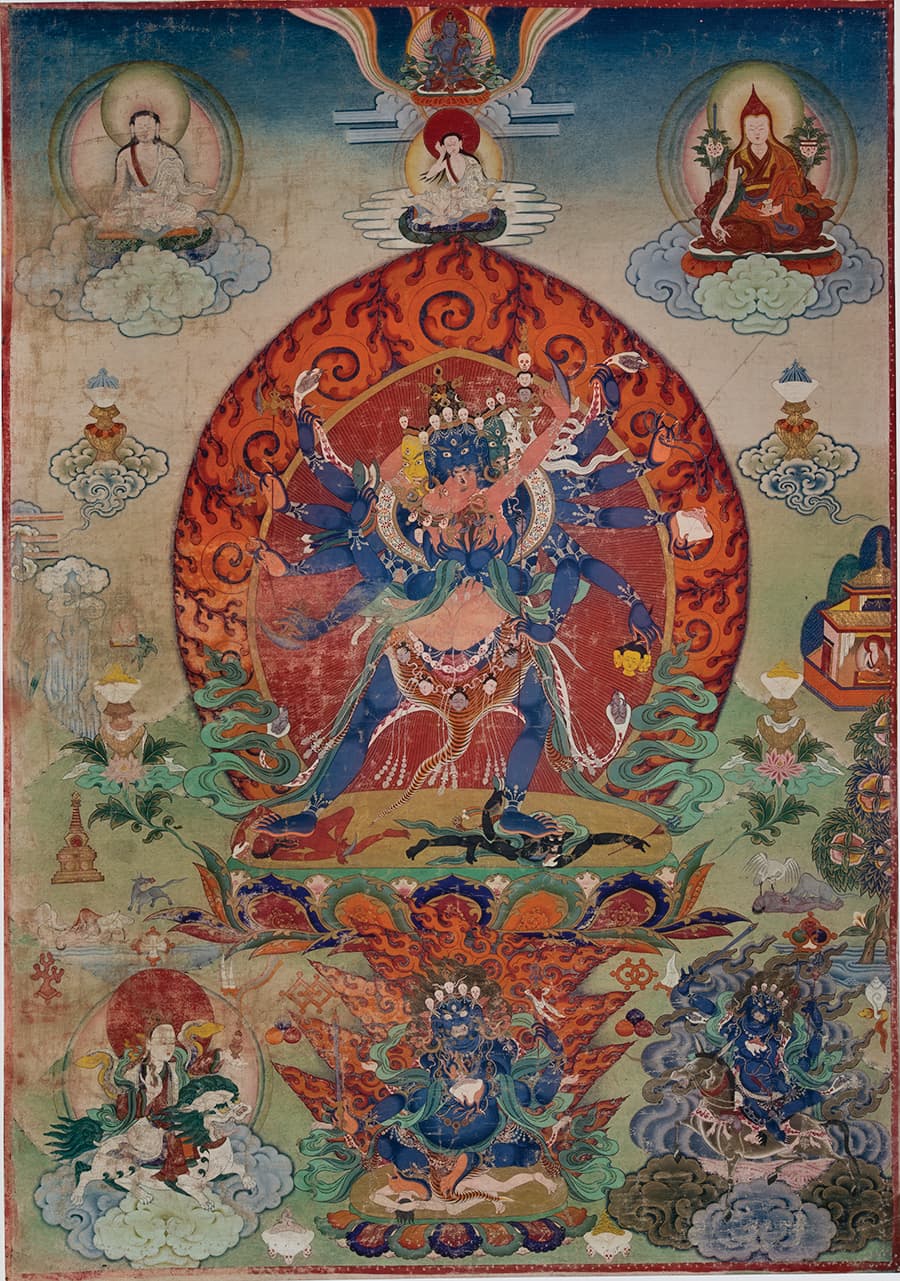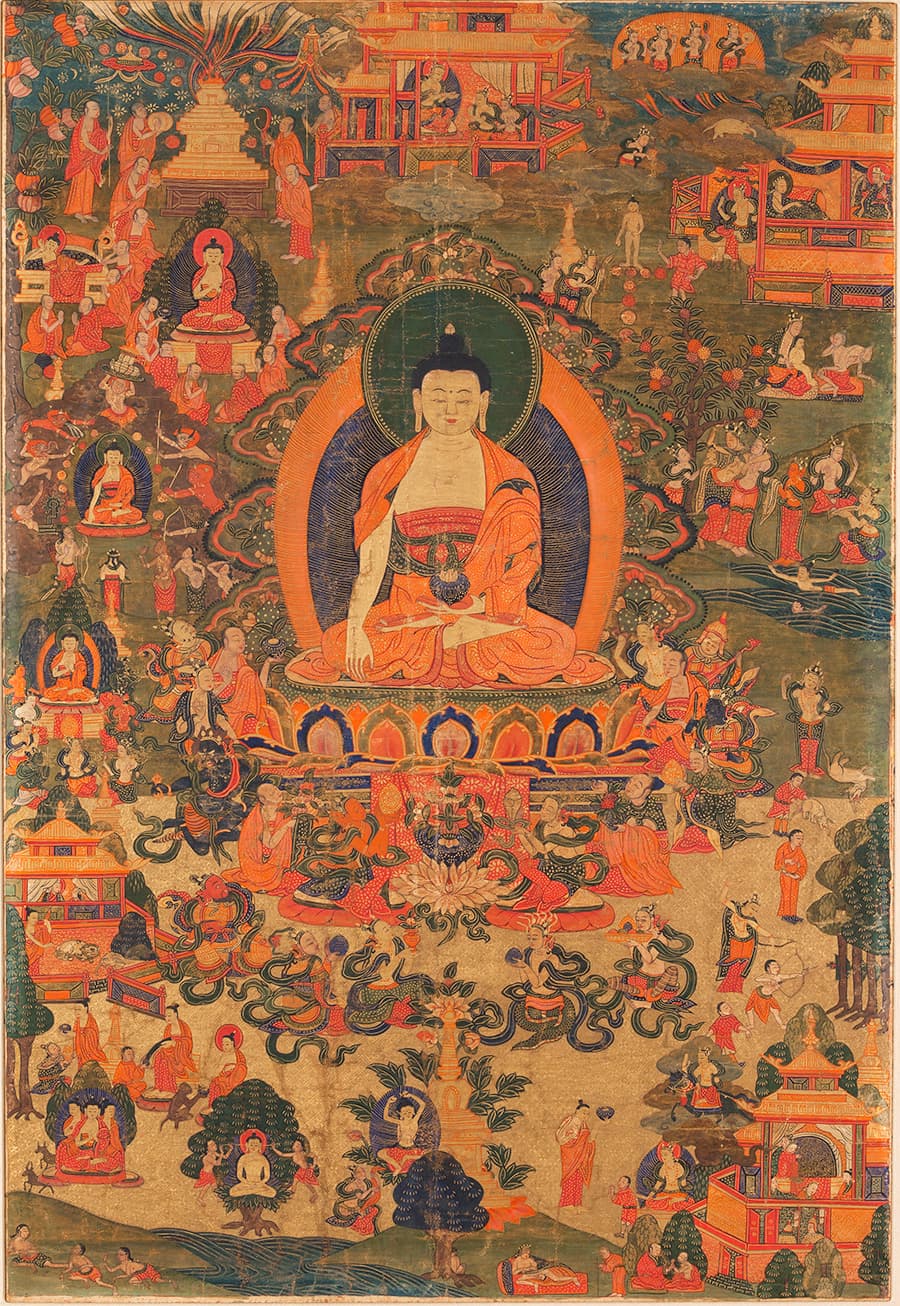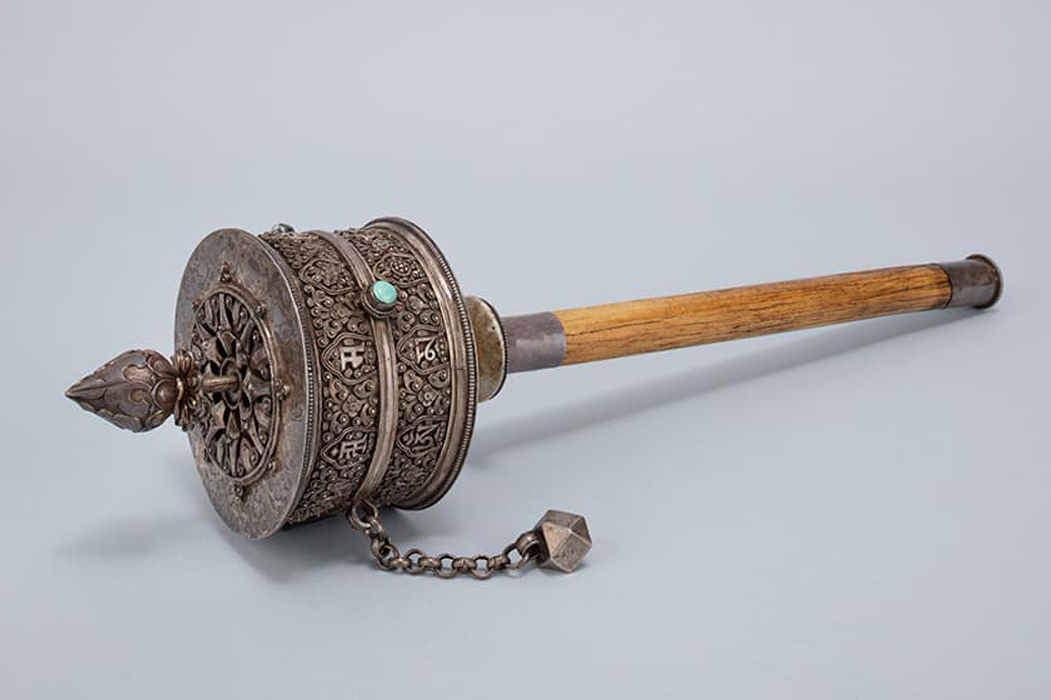McMullen Museum showcases Himalayan art
The McMullen Museum of Art at Boston College presents Gateway to Himalayan Art, a traveling exhibition organized by the Rubin Museum of Art that introduces the main forms, concepts, meanings, and traditions of Himalayan art and cultures. The exhibition features 101 objects from the Rubin Museum’s collection as well as multimedia elements—audio, videos, essays, maps, and more—from the Rubin’s recently launched educational initiative, Project Himalayan Art, a resource designed to support the inclusion of Tibetan, Himalayan, and Inner Asian art and cultures into undergraduate teaching on Asia.
The McMullen Museum is the first New England venue to host Gateway to Himalayan Art. The exhibition will be on view in the McMullen Museum’s Daley Family and Monan Galleries from September 5 to December 10, 2023.

"Chakrasamvara with Consort Vajravarahi"; Kham region, eastern Tibet; 19th century; pigments on cloth (Rubin Museum of Art, Gift of the Shelley & Donald Rubin Foundation)
“Gateway to Himalayan Art will engage visitors, especially students, with a multitude of new approaches, ranging from aesthetic and spiritual to technical, for understanding works of art from Bhutanese, Indian, Tibetan, and Nepalese cultures,” said Nancy Netzer, Inaugural Robert L. and Judith T. Winston Director of the McMullen Museum and professor of art history.
“The McMullen is honored to present the Rubin Museum of Art’s exhibition, comprising more than one hundred objects from its outstanding collection, accompanied by their exemplary didactics, digital platform, and publication.”
Gateway to Himalayan Art, which is modeled on the Rubin Museum of Art’s cornerstone exhibition of the same title, invites visitors to enter into the art and cultures of the greater Himalayan region—Indian, Nepalese, Bhutanese, Tibetan—and the interrelated Mongolian and Chinese traditions. Much of Himalayan art is informed by Buddhist, Hindu, and Indigenous religions, and images play a prominent role in cultural practices.

"Bodhisattva Kshitigarbha"; Tibet; 17th century; gilt copper alloy with pigment.
The exhibition highlights the fundamental visual language and meanings of Himalayan art, the materials and techniques used, and the purposes for the creation of these objects, often in the context of religious and secular well-being. It also includes voices from Himalayan artists and contemporaries, along with connections to related digital content to provide more information.
Gateway to Himalayan Art features traditional scroll paintings (thangka), sculptures in various media, medical instruments, and ritual objects. Among the featured installations are in-depth displays that explain the process of Nepalese lost-wax metal casting and the stages of Tibetan thangka painting.
The exhibition is an integral component of the Rubin Museum’s Project Himalayan Art, a three-part initiative that also includes the publication Himalayan Art in 108 Objects and a digital platform, a hub for the study of Himalayan art.
Together they provide introductory resources for learning about and teaching Himalayan art, with focus on cross-cultural exchange with Tibet at the center, and Buddhism as the thread that connects these diverse cultures.

"Life Story of Buddha Shakyamuni"; Tibet; 19th century; pigments on cloth.
“Project Himalayan Art has been over three years in the making and is a capstone in the Rubin Museum’s efforts to expand awareness and appreciation of Himalayan art and cultures on a global level,” says Rubin Museum of Art Executive Director Jorrit Britschgi.
“We are thrilled to bring the Gateway to Himalayan Art exhibition and its accompanying rich resources to Boston College and for students, teachers, and visitors from the surrounding community to discover and deepen their understanding of Asian art.”
The Rubin Museum of Art in Chelsea, New York City, explores and celebrates Himalayan art, cultures, and ideas across history and into the present. With its globally renowned collection, centered largely around art from the Tibetan Plateau, the Rubin fosters understanding and appreciation of the art by interpreting and relating it to shared human experience today.

Handheld Prayer Wheel; Central Tibet; early 20th century; silver, wood.
The McMullen Museum of Art at Boston College aims to cultivate learning, celebrate artistic excellence, explore the visual traditions of diverse cultures, and inspire transdisciplinary faculty and student research based on the visual arts. The McMullen offers exhibition-related programs and resources for diverse audiences of all ages on campus, in the Greater Boston area, and beyond.
All events are free. For more information about this exhibition and related programming, as well as hours, directions, and parking, visit the mcmullenmuseum.bc.edu.
